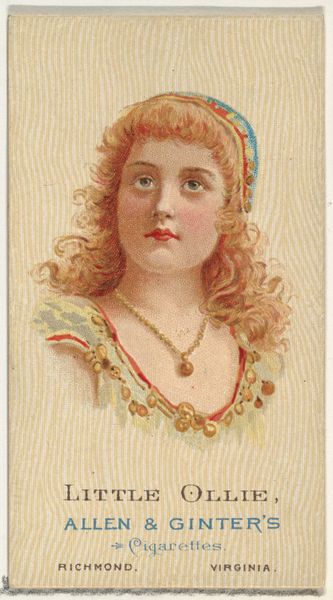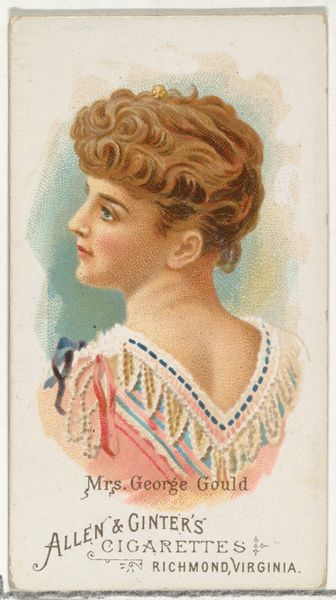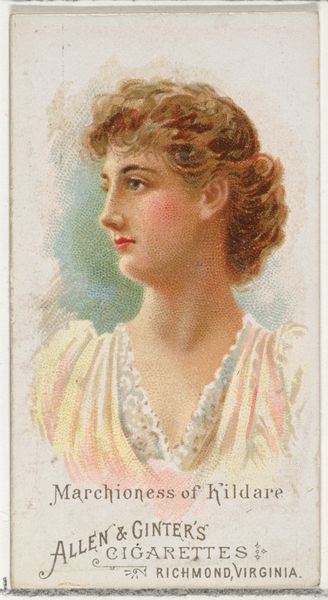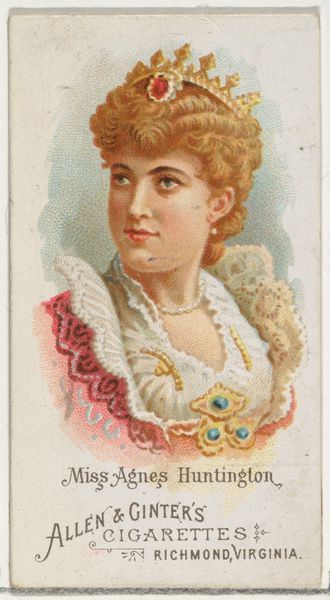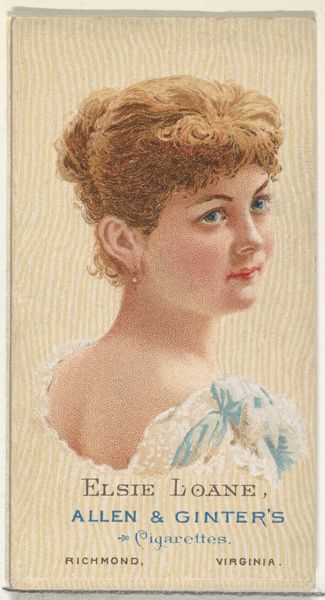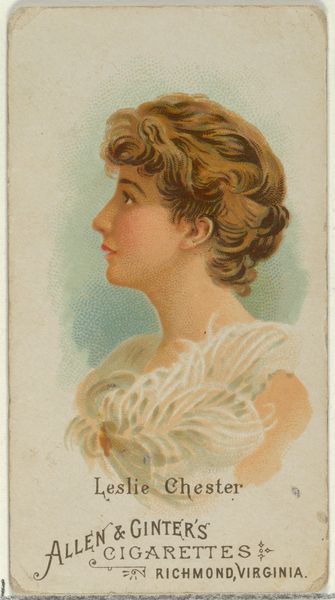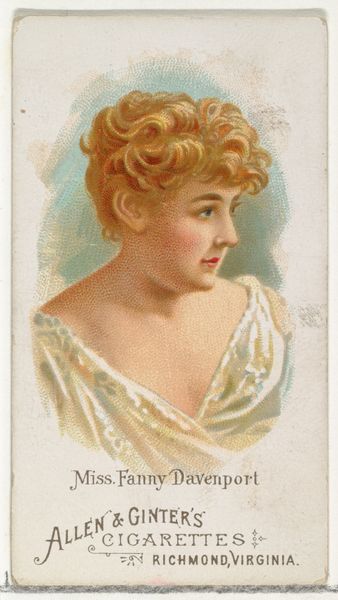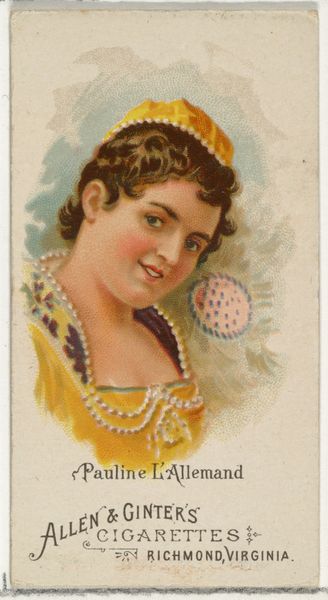
Miss Hading, from World's Beauties, Series 2 (N27) for Allen & Ginter Cigarettes 1888
0:00
0:00
#
portrait
# print
#
figuration
#
coloured pencil
#
decorative-art
#
portrait art
Dimensions: Sheet: 2 3/4 x 1 1/2 in. (7 x 3.8 cm)
Copyright: Public Domain
Editor: So this is "Miss Hading," a colored-pencil print from 1888, part of the "World's Beauties" series by Allen & Ginter Cigarettes. It feels so formal and yet… commercial? How do we unpack that combination? What strikes you about it? Curator: Well, let’s start with the obvious. It's an advertisement masquerading as fine art. The "World's Beauties" series reflects the late 19th century’s fascination with celebrity and global culture, packaged and sold with tobacco. It's a fascinating study in the politics of imagery and consumerism. How does it fit into what we know of the rise of print culture at the time? Editor: I see your point. The "World's Beauties" theme and the influence of Japonisme hint at the broadening of cultural horizons, yet it's ultimately serving a capitalist agenda. Are we meant to admire her beauty, or the cigarettes she's associated with? Curator: Precisely! The value of “Miss Hading's” image becomes intertwined with the product. The very act of collecting these cards, tucked into cigarette packs, made consumers active participants in the dissemination of these images and, by extension, the values they represent. Also, the rise of mass media had to do a lot with image making back then. Editor: So, it’s about the commodification of beauty and culture. Does the fact that it’s in the Met offer a layer of institutional validation? Curator: A pertinent question! Does its presence here critique the museum's own role in canonizing art, and its relationship to commercial entities of the past? Or does the institution claim value, in order to re-inscribe this image? Editor: That's given me a lot to think about. The intersection of art, commerce, and cultural values feels a lot more complex now! Curator: Indeed. By understanding its origins and cultural context, we see how even seemingly simple images like "Miss Hading" participate in larger social and historical dialogues.
Comments
No comments
Be the first to comment and join the conversation on the ultimate creative platform.



